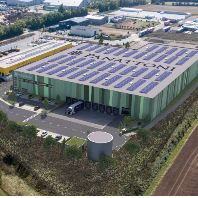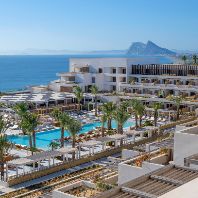The European competition, launched one year ago, is part of ULI's highly prestigious Awards for Excellence programme, which is widely recognized as the land use industry's most prestigious recognition programme. The competition is unique in that it recognises the full development process of a project, not just the architecture or design. To be considered as a candidate, the project must achieve a high standard of excellence in several areasdesign, construction, economics, marketing, and management. It must also demonstrate relevance to the contemporary and future needs of the community in which it is located and must be in stabilised operation.
According to ULI Europe President William P. Kistler, the Awards for Excellence: Europe programme highlights the excellence of European developments and recognises the individuals and organisations behind these projects. "We can all benefit from the tradition of land use excellence and lessons learned from Europe. In terms of design, planning and execution, many European developments are a showcase of best practises," Kistler said.
The winners were announced 1 June 2005 at ULI Europe's Emerging European Real Estate Markets conference in Istanbul. In November, the European winners will be recognized along with the winners of the Awards for Excellence: the Americas and the Awards for Excellence: Asia Pacific competitions at ULI's 2005 annual fall meeting in Los Angeles, California.
The ULI Awards for Excellence: Europe winners (owners and/or developers in parentheses) are:
- Cézanne Saint-Honoré, Paris, France (Société Foncière Lyonnaise; and Predica) Rue Paul Cézanne was a cul de sac in Paris's historic business district until the Cézanne Saint-Honoré refurbishment connected two underutilised buildings facing each other with a daylit underground open space, allowing the new tree-lined pedestrian way to pass through the block. The formerly obsolete spaces have successfully returned 28,420 square metres of prime office space to the market.
- Danube House, Prague, Czech Republic (Europolis Real Estate Asset Management s.r.o.) East of the ancient centre of Prague and on the Vltava riverbanks, on a site formerly occupied by railway yards and warehouses, Danube House's 19,800 square metres of office and 1,200 square metres of retail spaces have begun a transformation of a brownfield site. The red sandstone and glass wedge-shaped building incorporates innovative energy-saving designs, and establishes a landmark entry to the new River City development.
- Government Offices Great George Street, London, United Kingdom (The Exchequer Partnership) A public/private partnership refurbished a Grade II-listed property opposite the Houses of Parliament, reintegrating the Victorian-era building with its Westminster neighbourhood. All 93,903 square metres of office space has been let back to the government, and the public agencies that occupy GOGGS enjoy the benefits of a new long-term model for the development of government offices.
- De Hoftoren, The Hague, The Netherlands (RGD-Government Building Department; ING Real Estate Development) In a run-down area of The Hague, the developer began constructing a speculative 48-floor office building, conceiving it as a tower surrounding an inner courtyard (hence its name). By the time construction was complete, the Dutch Ministry of Education, Science, and Culture had purchased its 55,000 square metres of office space as its new headquarters building, returning public use to this corner of The Hague's urban parkland.
- Meander, Amsterdam, The Netherlands (Het Oosten Kristal; Latei) Named after the way the multifamily units meander along the canal, this 1







